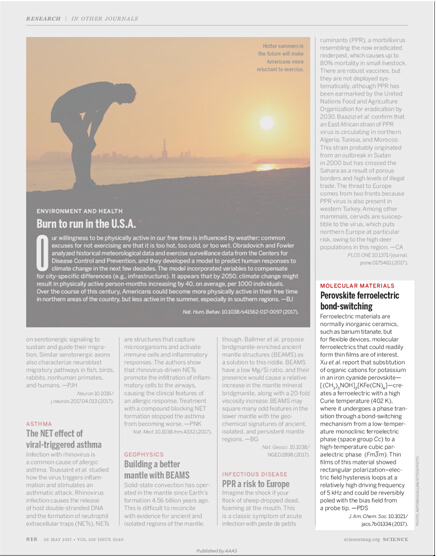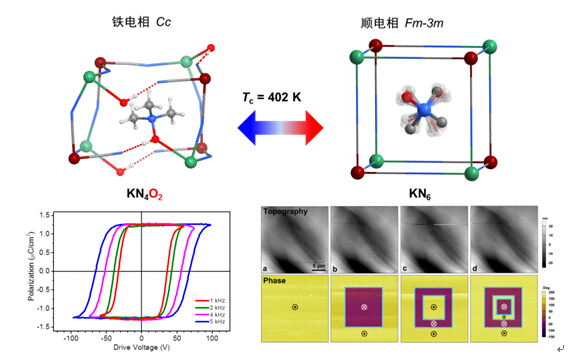A research paper of Associate Professor Wei-Xiong Zhang’s group was highlighted in internationally renowned magazine - Science
Source: School of Chemistry
Written by: School of Chemistry
Edited by: Wang Dongmei
On May 26, 2017, a research paper titled “A Molecular Perovskite with Switchable Coordination Bonds for High-Temperature Multiaxial Ferroelectrics”, which was published in the top chemical journal J. Am. Chem. Soc. by Associate Professor Wei-Xiong Zhang’s group from School of Chemistry in Sun Yat-sen University, was highlighted in the Editors' Choice column in the internationally renowned magazine Science. In the highlight titled "Perovskite ferroelectric bond-switching", the editor commented this research paper not only presented a novel ferroelectric mechanism to achieve an unique ferroelectric material and hence a high-performance film for flexible devices, but also opened a new door for designing molecular functional materials based on bond-switching mechanism.

Ferroelectric materials, in which spontaneous electric polarizations can be reversed using an electric field, are widely used in a variety of technical applications, such as ferroelectric random access memory, mechanical actuators, and piezoelectric devices. Since the first ferroelectric was discovered in 1921, the underlying phase transitions of ferroelectric mechanisms were limited to order−disorder and displacive types that are not involved in breaking of the chemical bonds. The phase transition involving the cleavage and reformation of chemical bonds hence to cause a reorganization of the crystal structure, which generally requires applying high pressures in inorganic crystals, was scarce and has yet to be achieved for ferroelectric mechanism. The research work of Associate Professor Wei-Xiong Zhang and coworkers showed that the bond-switching transition under ambient pressure is designable in molecular crystals, and demonstrated how to utilize the weaker and switchable coordination bonds in a novel molecular perovskite, [(CH3)3NOH]2[KFe(CN)6], to afford a scarce multiaxial ferroelectrics with a high Curie temperature of 402 K and 24 equivalent ferroelectric directions (more than BaTiO3). Moreover, the high-quality thin films of this compound can be easily fabricated by a simple solution process, and to reveal perfect ferroelectric properties at both macroscopic and microscopic scales, suggesting this compound as a promising candidate for applications in next-generation flexible electronics.

The bond-switching phase transition, the rectangular polarization-electric filed hysteresis loops, and the reversibly poled polarization in novel molecular perovskite ferroelectric[(CH3)3NOH]2[KFe(CN)6]
The research work was funded by the NSFC (21290173, 21427801, 91422302 and 21671202) and Pearl River S&T Nova Program in Guangzhou, as well as the collaboration of Professor Xiao-Ming Chen from School of Chemistry at Sun Yat-sen University and Professor Ren-Gen Xiong’s group from Southeast University. In recent years, Associate Professor Wei-Xiong Zhang’s group focused on the phase transition and the relevant functional materials of ABX3molecular perovskites, and has published a series of research papers in internationally influential journals, such as Angew. Chem. Int. Ed. 2015, 54, 914; Adv. Mater. 2016, 28, 5886; Chem. Commun. 2015, 51, 15641; Chem. Commun. 2014, 50, 1989. These distinctive research works have got increasing attentions and favorable comments from internationally influential journals (e.g., Nat. Rev. Mater. 2017, 2, 16099), and Wei-Xiong Zhang was invited to review the current progress on the phase transition of molecular perovskites for internationally famous journals (CrystEngComm 2016, 18, 7915).
Website Links:
The Highlight in Science: http://science.sciencemag.org/content/356/6340/817.7
The research paper in J. Am. Chem. Soc.: http://pubs.acs.org/doi/abs/10.1021/jacs.7b01334
